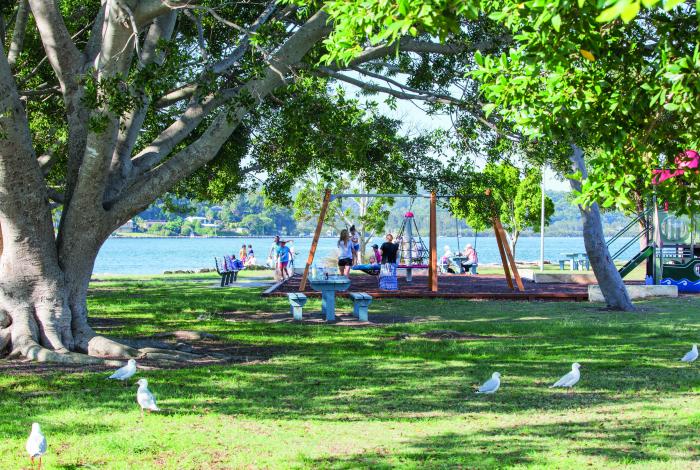Greener Places Strategy
Council developed a Strategy to promote, maintain and enhance urban greening across the Central Coast by planting and maintaining trees in public areas called the Greener Places Strategy.
The region-wide strategy includes mechanisms to sustain and enhance the urban forest canopy across all land parcels in the urban suburbs of the Central Coast by:
- increasing the level of tree planting in the 18 priority suburbs with the greatest level of Urban Heat Island Effect;
- commencing successional planting in Council passive open space reserves;
- ensuring that public trees that are removed are replaced by planting two new trees in the same suburb; and
- increasing the requirement of private developers to complete high quality landscaping in medium and high density development through future changes to Council's Development Control Plan.
The Strategy acknowledges the ability of urban greening to mitigate certain urban health effects and maintain liveability in urban centres. It is informed by the former Councils’ greening strategies and the Urban Heat Island and canopy mapping technical studies.
The 21 key actions identified in the strategy will be incorporated within Council’s future works program to ensure they are implemented. It is important that we all work together to protect and ensure that tree canopy cover and green space is maintained in a way that improves the liveability of the Central Coast region.
Visit Council's main website to view the adopted strategy.
Document Library
Segmented Documents
Timeline
Frequently asked questions
Does the Strategy include removing dangerous trees?
The Strategy includes a key principle that public trees should be removed if expert evidence suggests that they are a risk to public safety. Council’s Development Control Plan allows for tree removal if a private tree is dead or can be demonstrated that it poses a risk to safety.
Will I be consulted before trees are planted in my street or near my property?
The current Strategy will not undertake any physical works. Rather the Strategy provides a framework and strategic direction to facilitate a greening vision for the region. The Strategy prioritises 18 suburbs for future tree planting activities due to experience a high level of urban heat. Once the Strategy is adopted, site specific planting plans will be developed for each of these 18 suburbs through the Central Coast Green Grid project which is currently being developed. Prior to the implementation of the Green Grid consultation will occur with the community.
There is lots of bushland on the Coast. Why do we need more trees?
Some suburbs of the Central Coast do not include any bushland areas, with the nearest bushland areas being over one kilometre away. As such the benefits of bushland areas in these locations are minimal and an increase in urban tree cover will reduce urban heat.
Who will look after newly planted trees and vegetation on public land?
Once the Strategy is adopted, a maintenance program will be established for planted trees and vegetation, whereby Council crews or contractors will undertake maintenance and watering during establishment and drought periods.
How does this strategy relate to Council’s Tree and Vegetation Management Development Control Plan?
This Strategy establishes guiding principles that are generally consistent with Council’s draft Tree and Vegetation Management Development Control Plan. The priority of this Strategy relates to public trees and ensuring that removed trees on all land tenures are replaced wherever possible.
Will this strategy involve change to the Development Control Plans?
The Strategy identifies the development of a Green Infrastructure planning controls, to provide local context to SEPP 65- Design Quality of Residential Flat Development and the NSW Government’s Apartment Design Guide. Any future changes to Council’s planning controls, such as the DCP will occur as part of the Central Coast Comprehensive Local Environment Plan project.
What is the Urban Heat Island Effect?
The urban heat island is when an urban area is significantly warmer than surrounding bushland or rural areas due to the storage, rather than the reflectance of heat in urban materials such as roads and footpaths.
Will more trees increase bushfire risk in suburban areas?
Any tree planting will be completed in accordance with the Rural Fire Service’s Planning for Bushfire Protection. On bushfire prone land, planted trees will not reach more than a future 15% canopy cover and no trees will be planted within two metres of a roofline of a dwelling.

